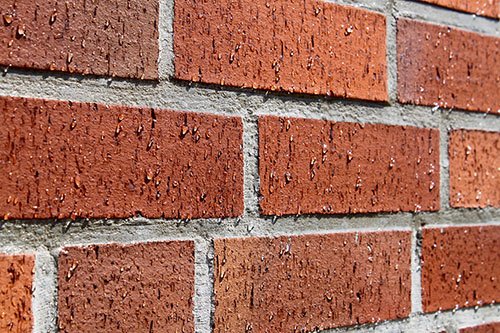Facade protection

MOISTURE-SOAKED FACADE

The reason
Without facade protection, external walls are permanently exposed to the weather. Over the years, rain, temperature fluctuations and intense sunlight can have a damaging effect on the materials used. If a façade continuously absorbs more moisture than it can release, this can cause various types of damage and drastically reduce the value of a building. It is essential to protect façades against moisture. If such protection is lacking, this can lead to considerable damage. If water penetrates the material and cannot dry properly, frost damage may occur. Crumbling of plaster is the result. But the heat-insulating properties of the exterior walls are also affected when they are soaked. In addition, a damp plastered façade quickly becomes dirty, which also affects the appearance of a building.

Facade protection

The solution
The solution is a facade protection / facade hydrophobic coating from BKM. The entire facade is cleaned and then the water-repellent material is applied. It hydrophobises the entire surface of the facade and makes it impossible for driving rain, for example, to penetrate further into the facade. At the same time, the surface remains diffuse. A facade treated in this way retains its appearance and its main function for many years.
Purpose: to protect the exterior wall against damage caused by moisture penetration.

Algemeen

Damage to the house facade is often the cause of a considerable loss of value of your house. Look out for cracks in the plaster or wall work, they can have many causes. Building defects, frost cracks, shrinkage cracks or cracks caused by building sagging are common causes of such damage to the house facade. Cracks in the house façade are in fact serious construction faults that must be repaired at all costs. Cracks in the outer skin of a building are weak points that form thermal bridges, absorb moisture and can affect the statics of the entire house.
I

Especially in the skirting area, oppressive water can penetrate from outside through the cracks, and frost or salts can cause further damage.
Weathered plaster and mortar or building materials with a naturally high porosity (e.g. hand-moulded clinkers, soft-baked bricks, etc.) can lead to damage. The typical effects on indoor surfaces are wallpaper coming loose and mould forming. They always start where other effects, such as the geometric cold bridge of a corner of a house, have a supporting effect.
II

External surfaces, on the other hand, show the familiar efflorescence. By hydrophobising the facade surfaces, the absorption of rainwater is prevented and the problem is solved.
For the hydrophobic sealing of facades or similar building elements, the BKM.Mannesmann range includes various products. These are deep waterproofing products based on extremely durable special plastics that are completely harmless, i.e. they do not evaporate or gas out and have no other unpleasant side effects on people, pets or the environment. The area of application of this building protection product is the hydrophobic impregnation of absorbent, primarily silicate-based building materials (e.g. brick products, plasters, mortars, concrete, etc.) whereby the water vapour permeability must be maintained.
III

Since the pores of the building material are not closed off, the water vapour permeability (the so-called breathability) of the building material is maintained. The application is therefore in the building sector, where penetration of rain and splash water must be prevented. As a result, the walls dry out and the surfaces remain clean for a long time, because no rainwater is absorbed and no dirt is washed in. The thermal insulation of the wall is also improved, since damp building materials – depending on their water content – sometimes have significantly lower thermal insulation than dry ones. The deeply penetrating product of BKM.Mannesmann AG produces interesting effects in terms of construction. For example, lime efflorescence on clinker facades, algae, mould and moss infestation, and frost damage are prevented.

Fields of application

With the exception of gypsum, all mineral and absorbent substrates, i.e. all building materials in which water can penetrate, are suitable for impregnation (façade protection). These include, among others:
Porous clinker and hard baked clinker | Lime and sand-lime bricks | Aerated concrete | Fair-faced concrete | Facade plaster | Sandstone | Jointing mortar
The hydrophobic coating can be applied as a surface protection on new dispersion and mineral paint layers, which significantly increases the durability of the paint film.

